Goddess in the making
They stand patiently in rows, holding the pose, while the artisans carefully paint their bodies and faces. Working fervently and with no time to waste, the men flit busily from one figure to the other, applying the finishing touches on some and filling in missing mud patches on others. There is barely a week left for them to be ready and dressed to take centre stage.
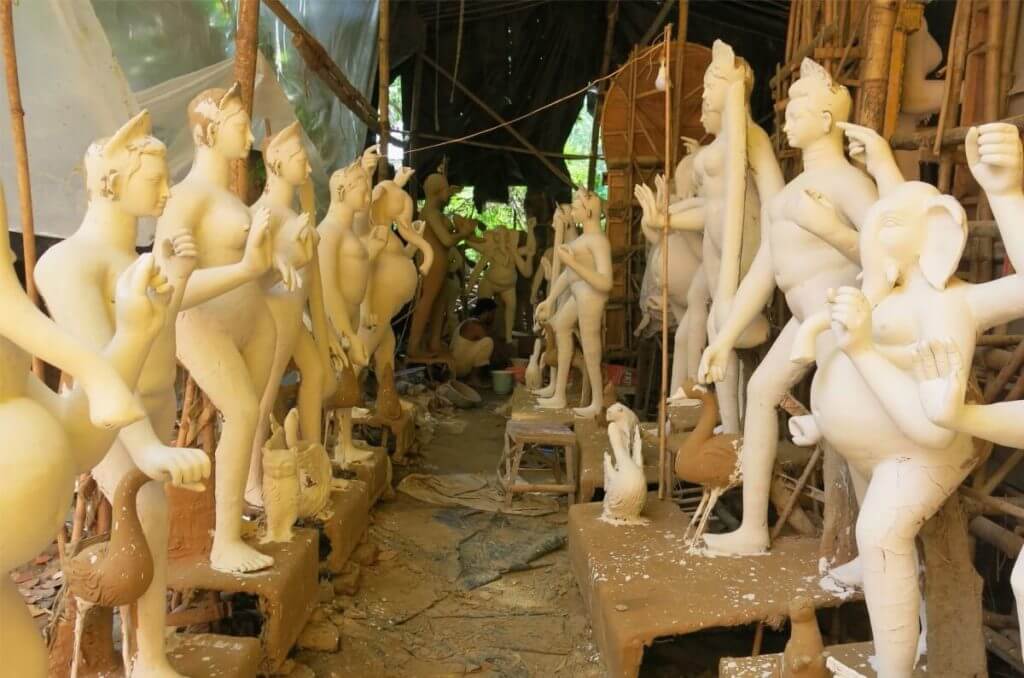
Months in making, these idols are being prepared for one of the most important Hindu festivals called Navratri or Durga Puja.
Navratri, or the Nine Nights of the Goddess, is celebrated in a big way in almost all parts of India around September-October every year. During this time the Goddess is revered in her nine forms, and the victory of good over evil is celebrated as she slays the demon Mahishasur.
Bengalis, whose home state is West Bengal in eastern India, celebrate Durga Puja not just privately in their homes but also in the community. For this, elaborate stages or ‘pandals’ are set up where the idol of Goddess Durga is placed, where she is worshipped amidst drum beats, chanting, offerings and prayer.
While the richly ornamented and beautiful idols and pandals are extremely attractive it is equally fascinating to see how they are created.
A short walking tour through a Bengali neighbourhood in Delhi, where the artisans are working on making idols and the pandals is well worth it if you happen to be here at this time.
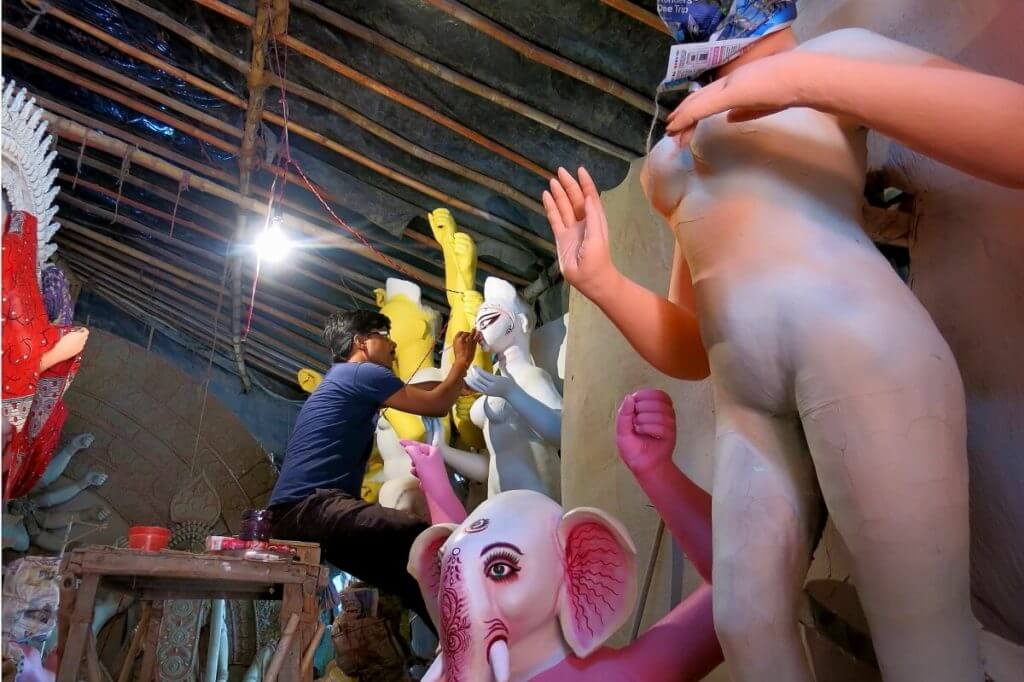
The skill and art of making idols is a specialized one for which the artisans come from Kolkata in West Bengal. They are so well known that they receive the orders for Durga Puja idols from many places. This time there were about 15 artisans who came to cater to 28 orders from Delhi and nearby towns.
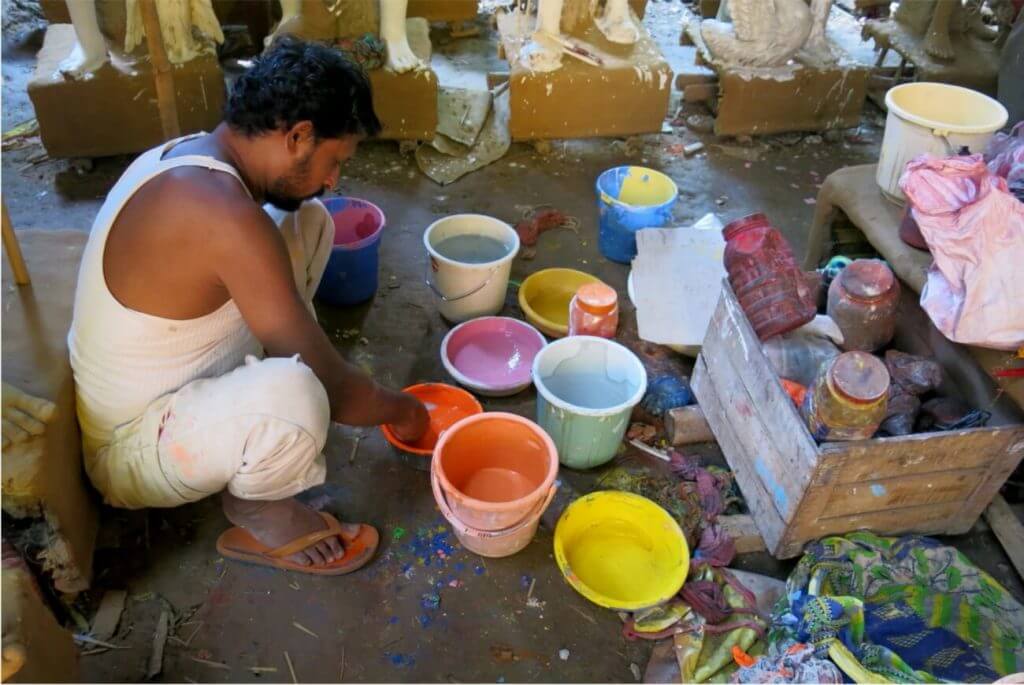
Having arrived three and a half months ago, they set up makeshift bamboo and tarpaulin sheds to work under. The weather plays an important role, considering the idols are made of clay and hay. Unpredictable rains and overcast humid days are not good and can ruin the idols and the schedule.
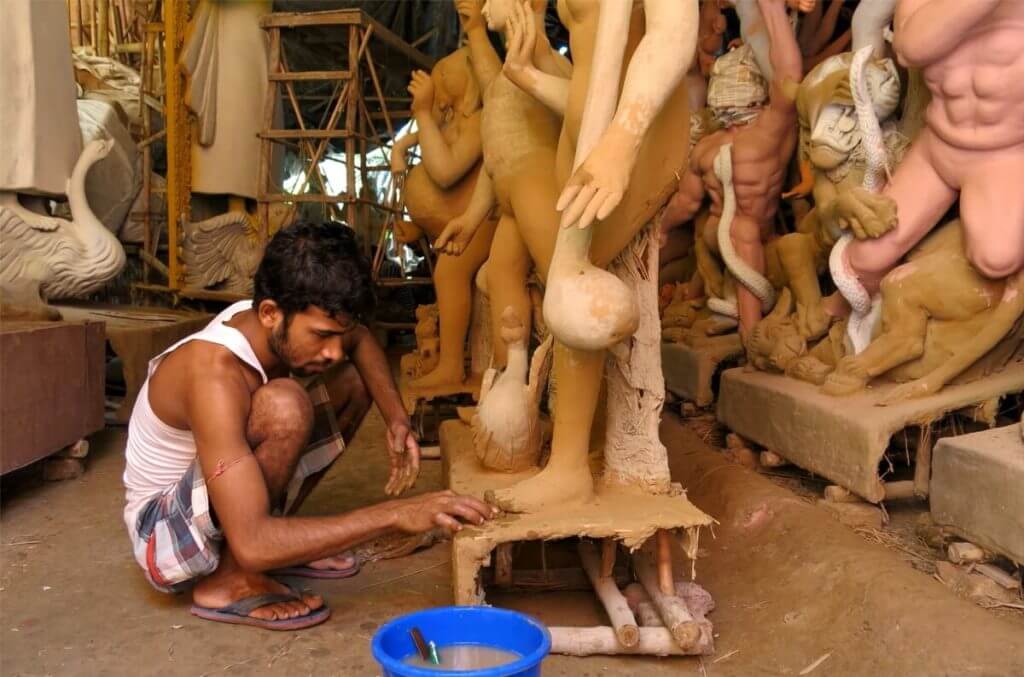
It’s just not the images of Goddess Durga that are being made here, even though she remains the main figure. Her entire family is created for the stage. Her four children are also present and each one has their ‘vehicle’ or animal ride with them. Her daughters are Lakshmi (Goddess of wealth, with the owl), Saraswati (Goddess of knowledge, music and arts with the swan) and her sons are Ganesha(the elephant headed God who is the remover of obstacles with the rat) and Kartikeya (a warrior God with the peacock). Durga herself rides a lion. Shiva, her husband is present but only on a small painting in the background.
While her family is shown with rather straight-faced expressions and their hands positioned to give blessings, the ten-armed Durga is always shown in the act of slaying Mahishasura who is half demon – half buffalo.
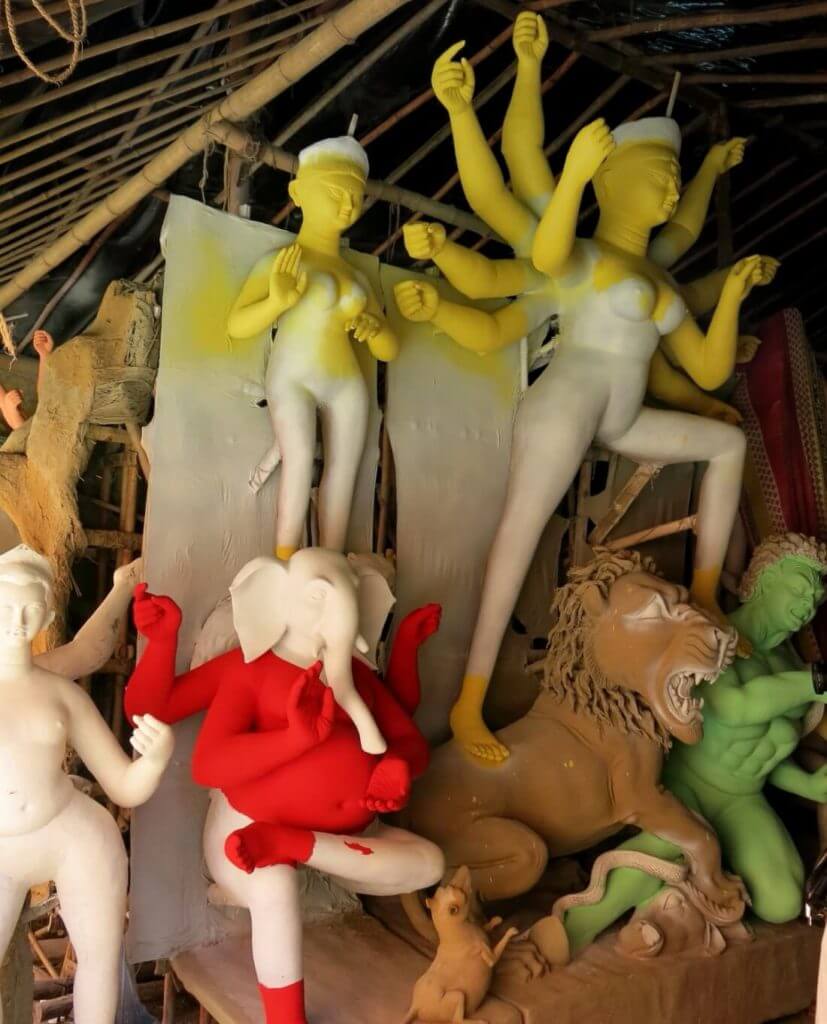
Depending on the spending capacity of the buyer, the sizes of the idols and the workmanship will vary. Some idols were quite tall, at around 12 feet.
Further ahead are the artisans and tailors who prepare the pandals stages and the decoration. I have truly never seen so much fabric lying in heaps in my life. These tailors seem unperturbed despite this looking like a mad scientist’s workshop.
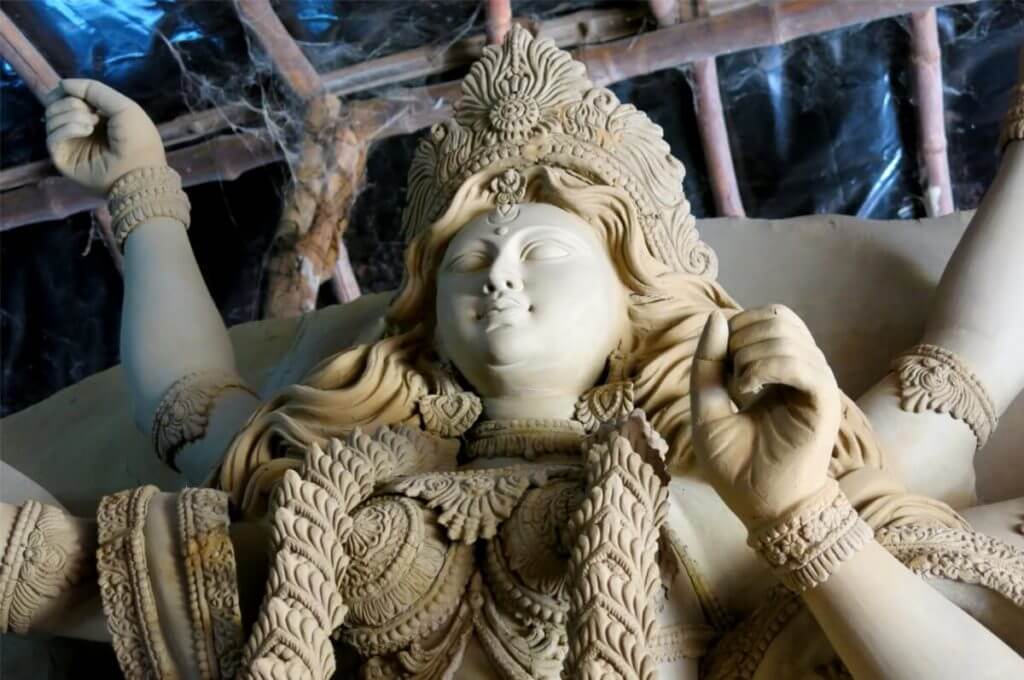
Goddess Durga with her finery and flowing hair. The artisans put in intricate details into the images, using only rudimentry tools. Image ©2017 Jasmine TrailsIf you like to do more than the usual sightseeing, don’t miss such festivals while you are in India.
The wonderful part is that everyone is invited!
Check out the festivals of India category to see what else you might catch while you are here.
Wishing my readers a brilliant Navratri.
